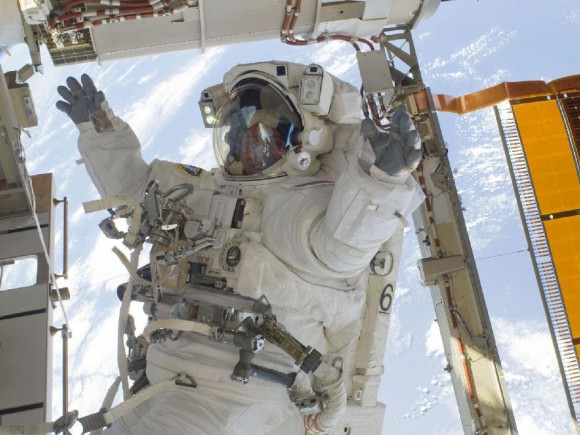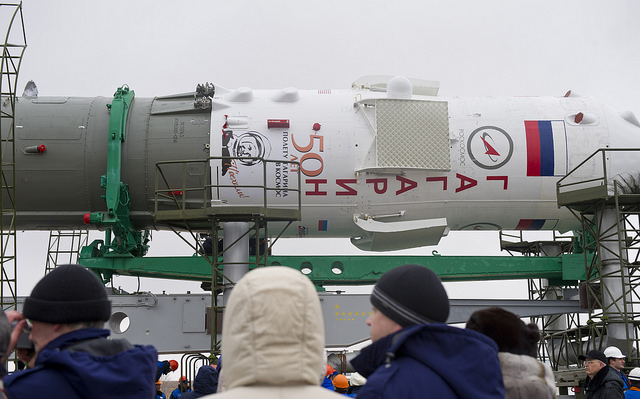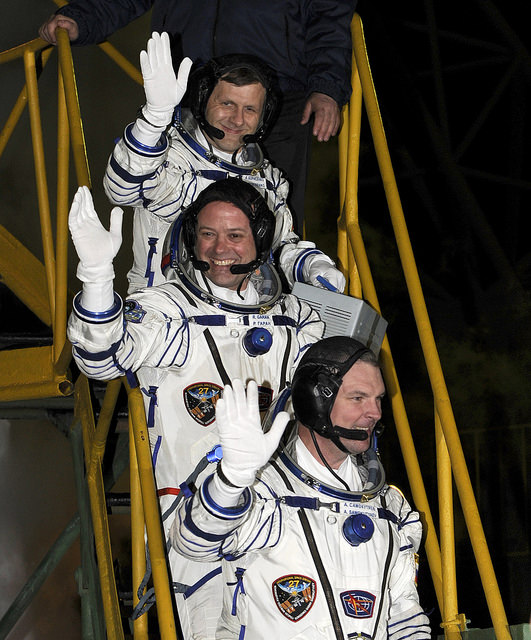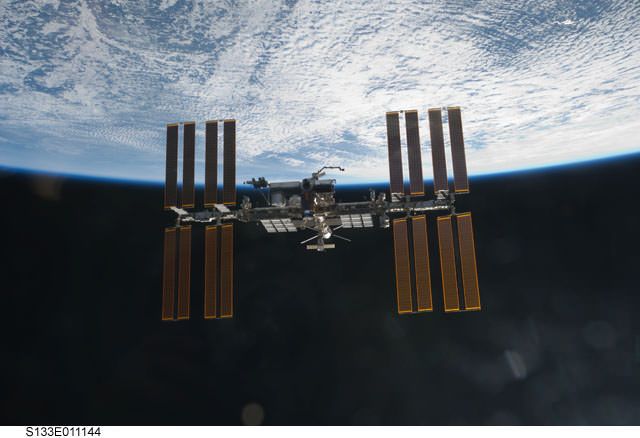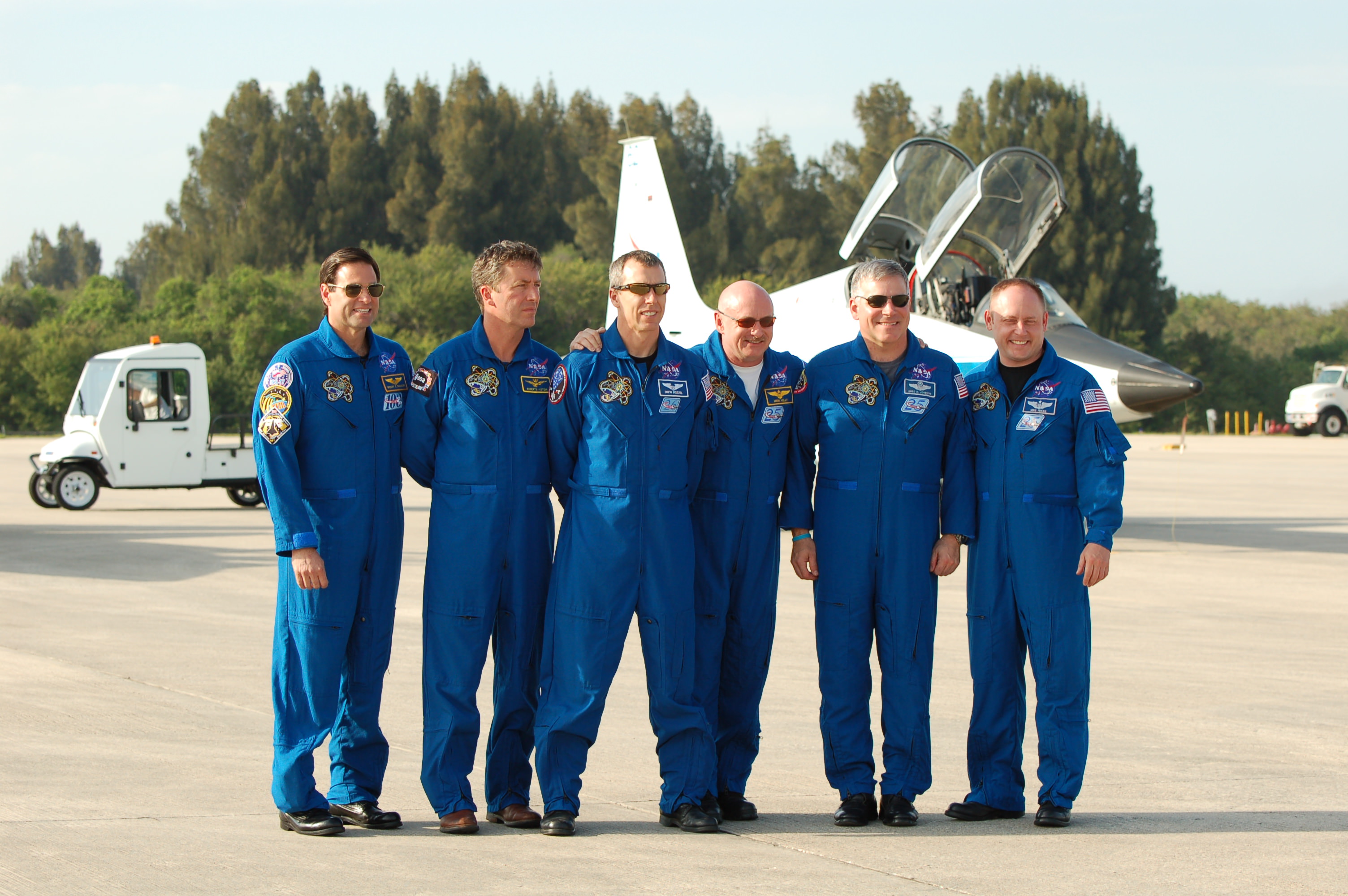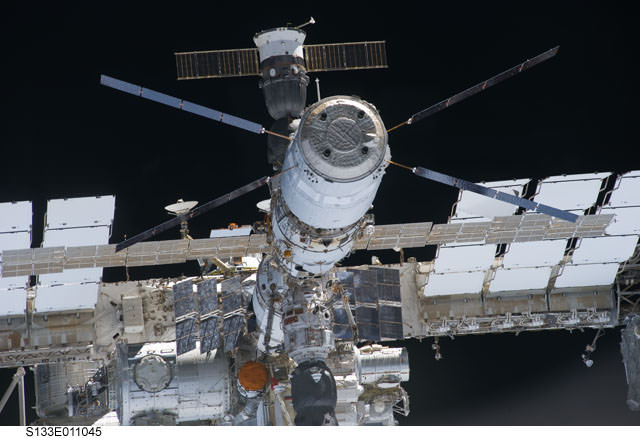The aerospace industry is typically filled with engineers, scientists and pilots. Hardly the segment of the population that is subject to expounding on the virtues of their trade in prose or through some other format. That said, every once and a while, a campaign, image or video comes along that simply nails what the men and women of the industry have been trying to say. Continue reading “Coalition for Space Exploration Tasks us to “Think Outside the Circle””
‘Gagarin’ Launches to Space Station
A Russian Soyuz spacecraft launching from the very same launch pad used by Yuri Gagarin when he became the first human in space 50 years ago blasted off from the Baikonur Cosmodrome in Kazakhstan, just a week shy of the April 12th anniversary. The launch took place on time on April 5, 2011 4:18:20 a.m local time (6:18:20 p.m. EDT on April 4), sending two cosmonauts and one astronaut to the International Space Station: Soyuz commander Alexander Samokutyaev, flight engineer Andrey Borisenko and NASA astronaut Ron Garan. The rocket bore the image (see below) and name of Gagarin to celebrate his historic flight.
[/caption]
The crew should reach the ISS on Wednesday.
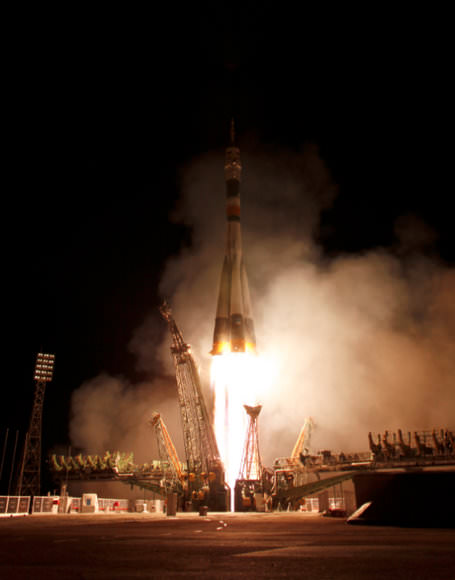
Expedition 27 crew members from top, Russian Flight Engineer Andrey Borisenko, NASA Flight Engineer Ron Garan, and Soyuz Commander Alexander Samokutyaev wave farewell from the bottom of the Soyuz rocket prior to their launch to the International Space Station from the Baikonur Cosmodrome in Baikonur, Kazakhstan, on Tuesday, April 5, 2011. Photo Credit (NASA/Carla Cioffi)
Shuttle Launch Delayed; Soyuz “Gagarin” Launch Set for Today
[/caption]
Just a bit of a traffic jam at the International Space Station has prompted a 10-day delay of the targeted launch for space shuttle Endeavour’s 25th and final mission, STS-134. Originally scheduled for April 19, the shuttle launch is now scheduled for 3:47 p.m. EDT on Friday, April 29. The delay removes a scheduling conflict with a Russian Progress supply vehicle scheduled to launch April 27 and arrive at the station April 29. Current restrictions do not allow a Progress to dock to the station while a shuttle is there.
Meanwhile, A Russian Soyuz spacecraft emblazoned with Yuri Gagarin’s face and name is scheduled to liftoff today (Monday, April 4, 2011) at 6:18:20 p.m. EDT (22:19 GMT) from the Baikonur Cosmodrome in Kazakhstan, bringing two cosmonauts and one astronaut to the ISS to round out the current Expedition 27 crew, returning the crew size to 6. On board will be Soyuz commander Alexander Samokutyaev, flight engineer Andrey Borisenko and NASA astronaut Ron Garan.
The Soyuz will launch from the same launch pad used by Yuri Gagarin when he became the first human in space 50 years ago on April 12, 1961. The Russian Space Agency is dedicating this launch of the Soyuz TMA-21 spacecraft to the anniversary. You can watch the launch on NASA TV.
NASA managers will hold a Flight Readiness Review on Tuesday, April 19 to make sure everything is go for the April 29 launch date for STS-134. The primary goals of Endeavour’s mission are to deliver critical supplies and equipment to the International Space Station, along with a $2 billion Alpha Magnetic Spectrometer, a particle physics experiment. Four spacewalks also are planned to carry out needed maintenance on the orbiting lab complex.
The shuttle launch is already generating a lot of interest – not only because it is Endeavour’s final flight, but also because Commander Mark Kelly’s wife, Congresswoman Gabriel Giffords, is hoping to be present at Kennedy Space Center for the liftoff. She was shot in the head in January of this year, but has recovered sufficiently to consider attending her husband’s final shuttle launch.
One other item of note: NASASpaceflight.com is reporting that a Soyuz flyaround is being considered again while the space shuttle is docked at the ISS. NASA had requested such a flyaround during the previous shuttle mission, STS-133, to be able to take images—both engineering and documentary – of the ISS with spacecraft from each of the partnering space agencies present. Japan’s HTV-2 has now departed, so if the flyaround is approved to take place during the STS-134 mission, that spacecraft would, of course, be missing from the family photo.
STS-134 wraps up TCDT
[/caption]
CAPE CANAVERAL – The crew who will fly on the last flight of the space shuttle Endeavour, NASA’s youngest orbiter, arrived at NASA’s Kennedy Space Center at 5:15 p.m. EDT (slightly ahead of schedule and ahead of a weather front) to conduct the Terminal Countdown Demonstration Test (TCDT). This roughly week-long exercise trains the astronauts in launch-related elements that they will need to be aware of during launch.
Arriving in their T-38s – the crew’s commander, Mark Kelly, arrived last and made brief comments regarding the upcoming flight. The STS-134 mission is the next-to-last flight of the shuttle program.
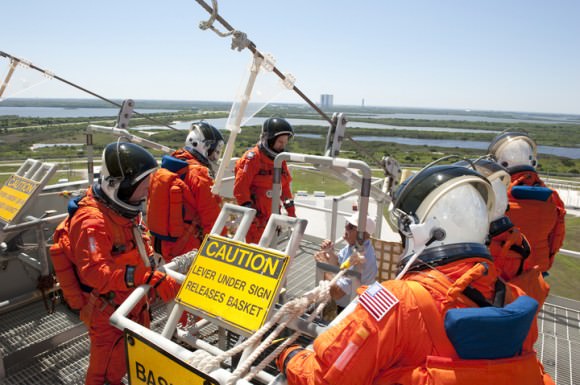
The STS-134 commander, Mark Kelly, was not present for the entire training cycle for this mission due to the shootings in Tucson, Arizona that saw his wife, Congresswoman Gabrielle Giffords seriously injured. Kelly took some time off to be with her. During this time, Rick Sturckow was assigned as a backup commander for the flight.
Kelly eventually rejoined his crew as they prepared for the mission. This was because of the rapidly approving condition of his wife. He attributed this to some of the misfortune that befell space shuttle Discovery as she was prepared for her final flight. Discovery had several mechanical issues that needed to be addressed before the orbiter was cleared for its Feb. 24 launch.
“The timing of the incident coincided with the launch slip (of STS-133, Discovery’s last flight),” said Commander Mark Kelly. “When I rejoined the crew, I really had not missed that much training and managed to integrate myself fairly well back into the flow.”
The crew for this mission consists of Kelly as the flight’s commander, Pilot Greg Johnson and Mission Specialists, Mike Fincke, Greg Chamitoff, Andrew Feustel and ESA astronaut (but under the Italian Space Agency for this mission) Roberto Vittori.
Weather played a big part during this TCDT. It determined that the crew arrived early; it also required that the crew hold one of the scheduled press conferences indoors (it was originally planned to have it at the launch pad) and it cut short the flight time that the commander and pilot had in the Shuttle Training Aircraft (STA).
Severe storms blew into Space Coast area shortly after the crew arrived. Launch Complex 39A, with Endeavour on it, was caught as the powerful, but brief storm passed by. NASA engineers thoroughly reviewed the orbiter and determined that there was minimal, if any, damage.
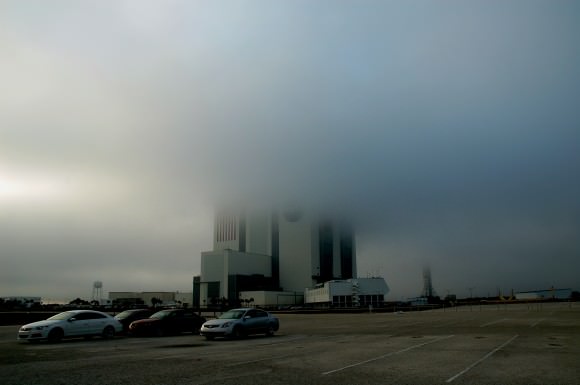
‘In Flight’ Shuttle Orbiter retirement display planned by Kennedy Space Center Visitor Complex
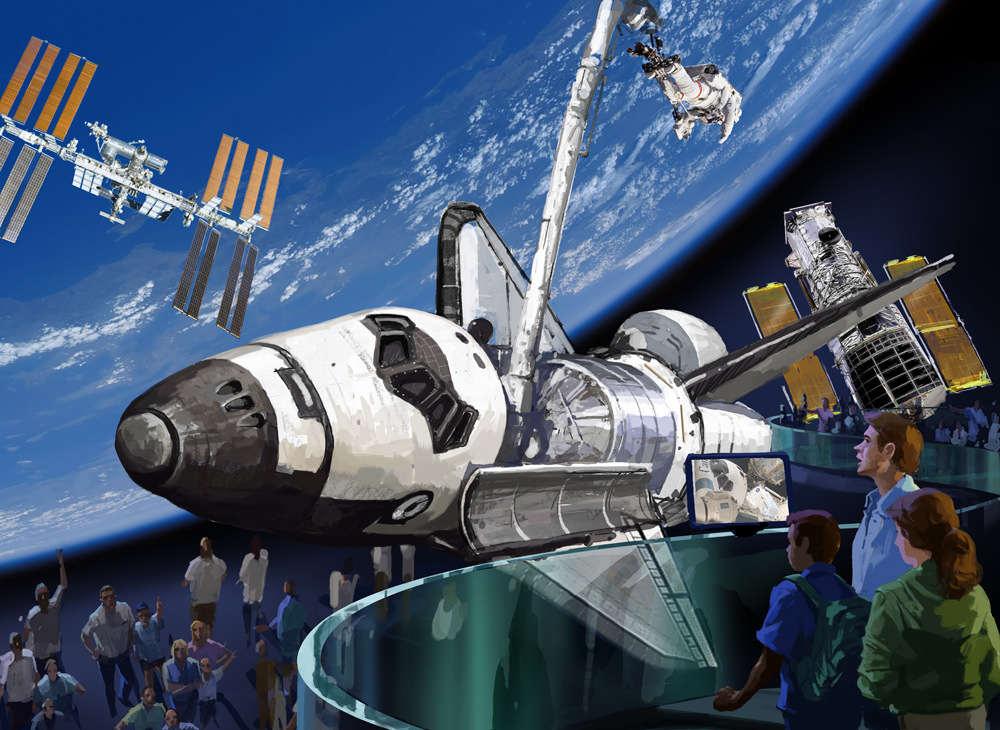
[/caption]
‘In Flight’ …. That’s the heart of the dramatic plan to showcase a Space Shuttle Orbiter being proposed by the Kennedy Space Center Visitor Complex (KSCVC) as they seek to win the heated competition to become the permanent new home to one of NASA’s three soon to be retired Orbiters.
Honoring the past, embracing the future of human spaceflight and celebrating the spirit of human determination; this is the new theme planned by the Visitor Complex at Kennedy so that guests of all ages will feel like they are embarking on an interactive space expedition. See the ‘In Flight’ graphic illustration above.
Some 21 science centers and museums across the US are bidding for the once in a lifetime chance to house NASA’s surviving shuttle orbiters; Discovery, Atlantis and Endeavour.
“The Kennedy Space Center is the home of the Space Shuttle unlike all the other places,” said Bill Moore, Chief Operating Officer of KSCVC. I spoke to Moore at KSC in an exclusive interview for Universe Today.
“All of the shuttle missions have launched from here, not anywhere else. So Kennedy is their home. And they all eventually come back here at the end of each mission. So we have a compelling story to tell about their history at KSC and the future.”
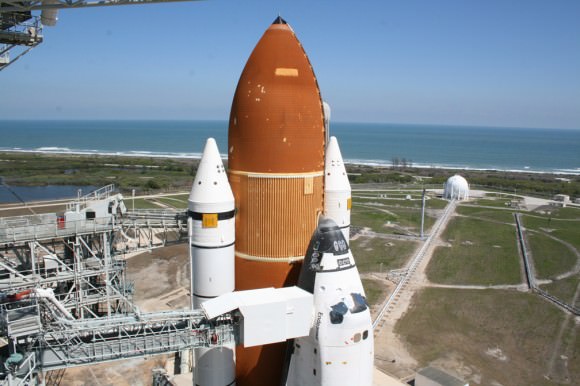
Shuttle orbiter display at the Kennedy Space Center Visitor Complex will include many shuttle artifacts, including the White Room - shown here attached to shuttle Endeavour. Astronauts walk
through the white room to enter the shuttle crew cabin. Credit: Ken Kremer
The Smithsonian National Air & Space Museum, Washington, D.C., has long been expected to be picked as the retirement home for Space Shuttle Discovery, the oldest orbiter. That leaves Atlantis and Endeavour remaining in the bidding war. Since the Smithsonian currently displays the shuttle Enterprise, that unflown orbiter would also be up for grabs by another venue.
NASA Administrator Charles Bolden will decide the final site selections. He is scheduled to announce the winner of the nationwide competition on April 12, which is the 30th anniversary of the first shuttle flight (STS-1) by Columbia on April, 12, 1981.
Another location that plays a pivoital role in the U.S. space program is NASA’s Johnson Space Center in Houston, Texas, home to Mission Control. Johnson Space Center is also home base for the shuttle astronauts and houses the facilities where they train for space missions. The Johnson Visitor Center – Space Center Houston – has proposed a 53,000 square foot pavilion with interactive exhibits.
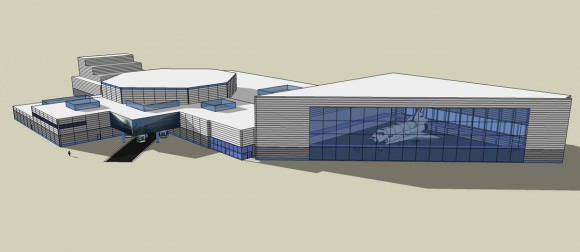
Many of those who work on space projects feel strongly that two of the orbiters should unquestionably be awarded to the Kennedy Space Center (KSC) and the Johnson Space Center JSC) since these are the two locations most intimately involved with the Space Shuttle program. All the crews were trained at JSC and blasted off to space from KSC.
Among the other contenders in the running to house an orbiter are; the Intrepid Sea-Air-Space Museum in New York City; the Adler Planetarium in Chicago; the National Museum of the Air Force in Dayton, Ohio; the U.S. Space & Rocket Center in Huntsville, Alabama; the Museum of Flight in Seattle.
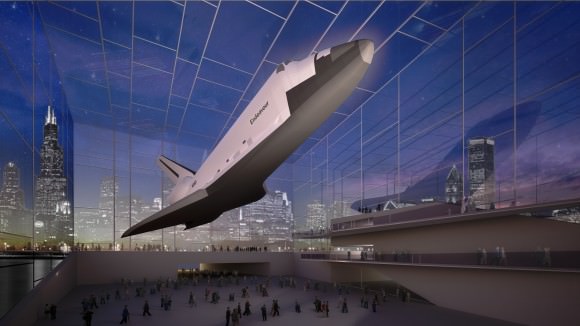
At the Kennedy Visitor Complex, a brand new 64,000 square-foot hall would be constructed to display the orbiter “In Flight”. The exhibit would engage viewers in an up close experience to see how the vehicle actually worked in space and also feature its major accomplishments; such as building the International Space Station (ISS) and upgrading the Hubble Space Telescope.
The orbiter home is projected to cost some $100 million and would be the marquee element of the master plan entailing a transformative overhaul of the entire visitor complex at Kennedy, according to Moore.
The KSCVC concept is outlined in a thick book with extensively detailed story boards and drawings. Clearly, a lot of hard work and thought has gone into designing KSCVC’s proposal to house an orbiter and integrate it with a complete renovation and update of the spaceport tour facilities. The goal is to satisfy the interests of the whole family- not just hard core space geeks.
“We (KSCVC) will display the orbiter tilted, like it is flying in space and at work. Because that’s the way people think about the orbiter – working in space. Not sitting on the ground on three wheels,” Moore explained to me.
“So, our job at KSC is to show the shuttle’s working time as it is flying in space. The payload bay doors will be open and the robotic arm will be extended. Some type of cargo will be inside. We will also show the Hubble and the ISS with models, giant video screens and murals, because we think that’s key to understanding the role of the shuttle.”
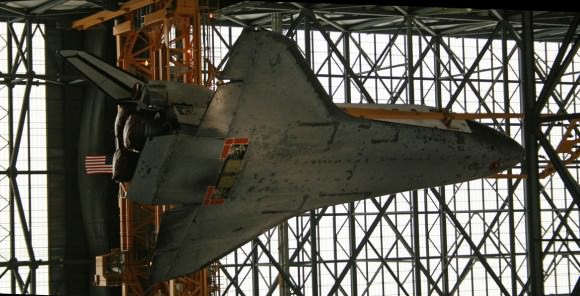
This tilted view of Space Shuttle Endeavour ‘In Flight’ may give an impression of what visitors might experience in the shuttle orbiter exhibit planned by the Kennedy Space Center Visitor Complex if they are selected as a permanent home for the retired vehicle. I snapped this photo inside the Vehicle Assembly Building while Endeavour was vertically tilted and being hoisted by cables in mid-air. The photo has been rotated 90 degrees to look as though it were horizontal. Credit: Ken Kremer
Moore told me that this will be the largest building ever constructed at KSCVC, even bigger than the popular Shuttle Launch Experience completed a few years back.
“When people come into the exhibit, their first view will be to see the orbiter as though someone would see it by looking out from the ISS, up against a gorgeous backdrop of the Earth, the Sky and the Universe.”
“The point is to make you believe that you are actually seeing the orbiter in space. Visitors will be able to view the orbiter from many different angles,” said Moore.
The shuttle will be shown as it really looks and is flown with the heat shield tiles, with all its scorch marks, pits, scars and imperfections.
“We do not want the orbiter to be polished to a pristine state,” Moore stated firmly.
“We want to expose as many people as possible from around the world to this wonderful vehicle and to what’s happened up there in space.”
“The vehicle is just part of the story. The story is much bigger.
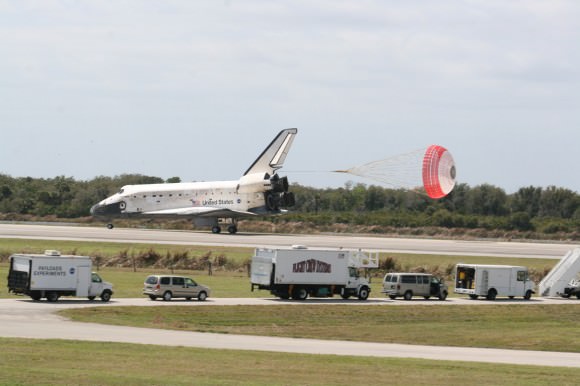
Space Shuttle Discovery concluded her magnificent final journey with a safe landing on March 9, 2011 at the Kennedy Space Center in Florida. Discovery is the first shuttle to be retired and will likely be housed at the Smithsonian National Air and Space Museum in Washington, DC. Credit: Ken Kremer
“The purpose of the display building is that we want to show the whole story of what the shuttle has done and all the major milestones. The people who processed and cared for the orbiters are also part of the story,” Moore amplified.
“We will remember and show the story of those who made the ultimate sacrifice, what we learned from the accidents and then fixed lots of issues to get to a better flight system.”
I asked Moore, when will the exhibit open ? “I would like to open the exhibit by mid to late 2013,” he replied.
The orbiter will be showcased with components from the shuttle’s history. “We have the beanie cap, the white room and a fairly large collection of many other artifacts, parts and items beyond just the orbiter that will be used to tell the story of the shuttle program.”
“The shuttle story covers 30 remarkable years,” said Moore.
Only two flights remain until the shuttles are forcibly retired for lack of many and some say willpower to continue exploring.
The final flight of Endeavour on the STS-134 mission is set for April 19. Atlantis is honored with the shuttle programs very last mission, STS-135, slated for late June 2011.
Discovery just landed on her historic final mission on March 9 – a thrilling and bittersweet experience for all who work and report on the shuttle program. Discovery is being decommissioned and now belongs to history although she has a lot of life left in her.
Stay tuned for the April 12 announcement of the Orbiter homes selected.
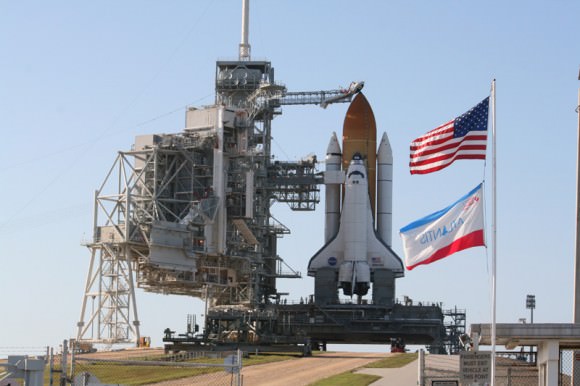
Atlantis will blast off on the final mission of the shuttle era in late June 2011. Credit: Ken Kremer
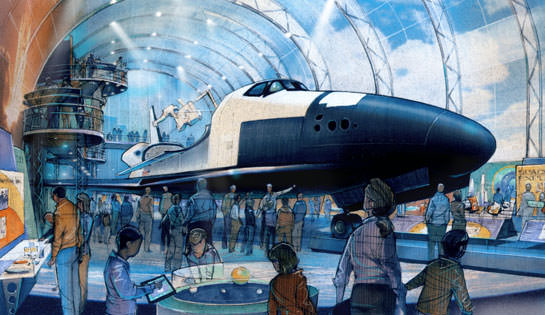
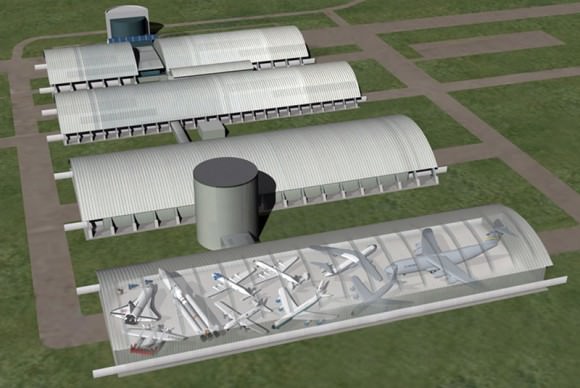
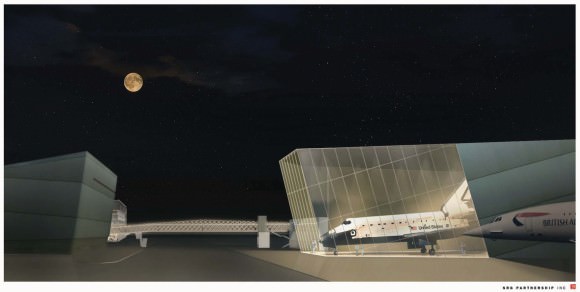
ATV In-Flight Refueling for ISS Set for Mid-May
[/caption]
ESA’s Automated Transfer Vehicle Johannes Kepler is more than just a cargo carrier for the International Space Station, it is also an on-orbit refueling station and orbit booster. On May 17-19, 2011 the Kepler ATV is scheduled to conduct its first refueling of the ISS, as it will transfer about 850.6 liters (225 gallons) of propellant for the station’s own thrusters for future boosts in orbit.
Preparations for the ISS refueling began on March 22 with a leak test of the propellant transfer lines, to ensure the connections between the ISS and ATV-2 were completely sealed; the test was a success, meaning that as of now, everything is go for the station’s refueling.
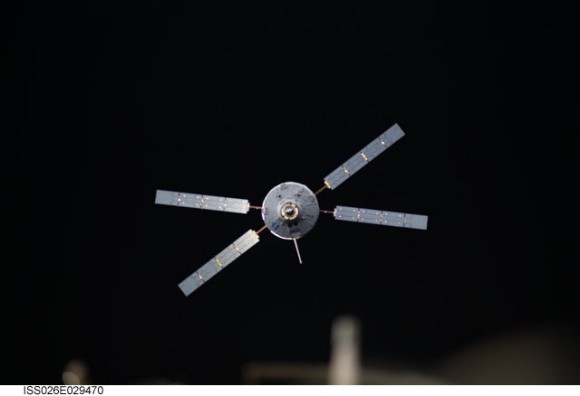
In mid-March, the ATV increased the ISS’s orbit with a 882-second (14 and a half minutes) burn, giving the ISS an extra push of about 2.1 m/s. In all, Kepler brought nearly 10,000 pounds (4,500 kilograms) of propellant that has been used by its thrusters to boost the space station to a new altitude of 400 kilometers (248 miles) above the Earth. This will be the new “normal” for the station’s orbit. Previously, the ISS orbited about 350 km (220 miles) up.
The main benefit of raising the station’s altitude is to cut the amount of fuel needed to keep it there by more than half. This also means that visiting vehicles will not be able to carry as much cargo as they could if they were launching to the station at a lower altitude since they will need more fuel to reach the station, but it also means that not as much of that cargo needs to be propellant.
The orbit of the ISS degrades because Earth’s atmosphere — though tenuous at those altitudes – expands and contracts through the Sun’s influence, and there are enough molecules that contact the surfaces of its large solar array panels, the large truss structure, and pressurized modules to change its speed, or velocity, which is about 28,000 kilometers an hour (17,500 mph).
At the ISS’s old altitude, the space station uses about 19,000 pounds of propellant a year to maintain a consistent orbit. At the new, slightly higher altitude, the station is expected to expend about 8,000 pounds of propellant a year. And that will translate to a significant amount of food, water, clothing, research instruments and samples, and spare parts that can be flown on the cargo vehicles that will keep the station operational until 2020 and beyond.
Kepler also sent a breath of fresh air to the station by transferring about 8kg of oxygen to the ISS in March, which was the first re-pressurization of the ISS’s internal atmosphere conducted by Kepler.
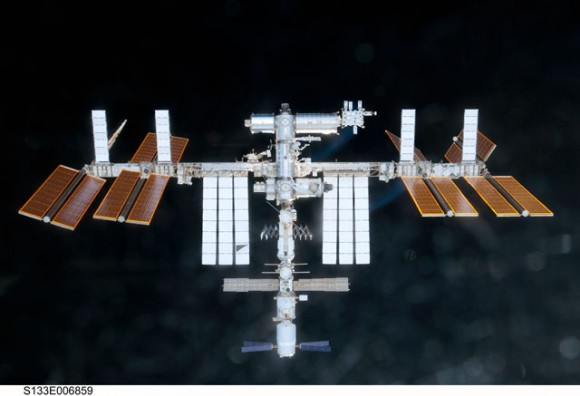
NASAs First Orion Capsule and New Space Operations Center Unveiled
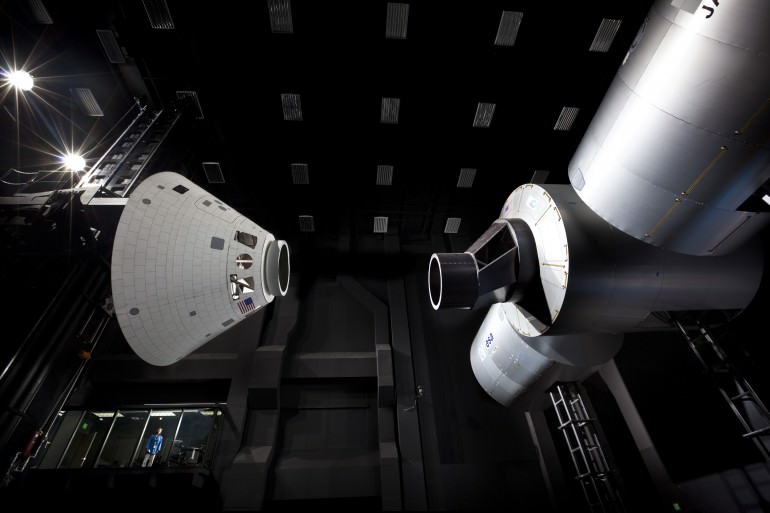
[/caption]
The inaugural version of NASA’s new Orion human space exploration capsule was unveiled by Lockheed Martin at the company’s new state-of-the-art Space Operation Simulation Center (SOSC) located in Denver, Colorado. Orion is designed to fly human crews to low Earth orbit (LEO) and the International Space Station, the Moon, Asteroids, Lagrange Points and beyond to deep space and Mars.
Lockheed Martin is aiming for a first unmanned orbital test flight of Orion as soon as 2013, said John Karas, vice president and general manager for Lockheed Martin’s Human Space Flight programs in an interview with Universe Today . The first operational flight with humans on board is now set for 2016 as stipulated in the NASA Authorization Act of 2010.
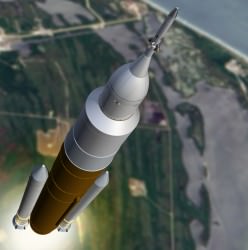
This Orion prototype capsule was assembled at NASA’s Michoud Assembly Facility (MAF) in New Orleans, LA and shipped by truck to Denver. At Denver, the capsule will be put through a rigorous testing program to simulate all aspects of a space mission from launch to landing and examine whether the vehicle can withstand the harsh and unforgiving environment of deep space.
Orion was originally designed to be launched by the Ares 1 booster rocket, as part of NASA’s Project Constellation Return to the Moon program, now cancelled by President Obama. The initial Orion test flight will likely be atop a Delta IV Heavy rocket, Karas told me. The first manned flight is planned for the new heavy lift rocket ordered by the US Congress to replace the Project Constellation architecture.
The goal is to produce a new, US-built manned capsule capable of launching American astronauts into space following the looming forced retirement of NASA’s Space Shuttle orbiters later this year. Thus there will be a gap of at least three years until US astronauts again can launch from US soil.
“Our nation’s next bold step in exploration could begin by 2016,” said Karas in a statement. “Orion was designed from inception to fly multiple, deep-space missions. The spacecraft is an incredibly robust, technically advanced vehicle capable of safely transporting humans to asteroids, Lagrange Points and other deep space destinations that will put us on an affordable and sustainable path to Mars.”
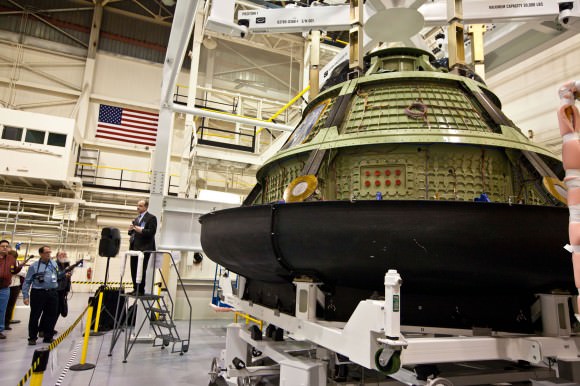
Lockheed Martin is the prime contractor for Orion under a multiyear contract awarded by NASA worth some $3.9 Billion US Dollars.
The SOSC was built at a cost of several million dollars. The 41,000 square foot facility will be used to test and validate vehicles, equipment and software for future human spaceflight programs to ensure safe, affordable and sustainable space exploration.
Mission scenarios include docking to the International Space Station, exploring the Moon, visiting an Asteroid and even journeying to Mars. Lockheed has independently proposed the exploration of several challenging deep space targets by astronauts with Orion crew vehicles which I’ll report on in upcoming features.
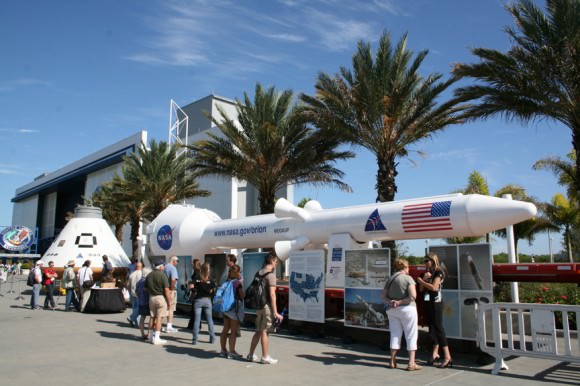
Full scale mockups of the Orion capsule and emergency abort rocket are on public display at the Kennedy Space Center Visitor Complex in Florida. Orion crew capsule mockup (at left) and Launch Abort System (LAS) at right. The emergency rocket will be bolted atop an Orion spaceship for the initial orbital test flight currently slated for 2013 launch. The LAS mockup was used in launch pad exercises at the New Mexico launch site of the LAS rocket blast-off in May 2010. Credit: Ken Kremer
The SOSC facility provides the capability for NASA and Lockheed Martin engineers to conduct full-scale motion simulations of many types of manned and robotic space missions. Demonstrations are run using laser and optically guided robotic navigation systems.
Inside the SOSC, engineers can test the performance of a vehicles ranging, rendezvous, docking, proximity operations, imaging, descent and landing systems for Earth orbiting mission as well as those to other bodies in our solar system.
“The Orion spacecraft is a state-of-the-art deep space vehicle that incorporates the technological advances in human life support systems that have accrued over the last 35 years since the Space Shuttle was designed.” says Karas. “In addition, the Orion program has recently been streamlined for additional affordability, setting new standards for reduced NASA oversight. Orion is compatible with all the potential HLLVs that are under consideration by NASA, including the use of a Delta IV heavy for early test flights.”
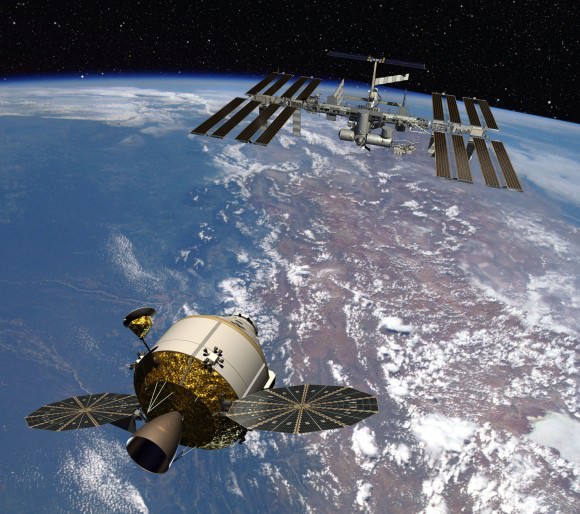
At this moment, the SOSC is being used to support a test of Orion hardware that will be flying on the upcoming STS-134 mission of Space Shuttle Endeavour. Orion’s Relative Navigation System – dubbed STORRM (Sensor Test for Orion RelNav Risk Mitigation) – will be put through its paces in several docking and navigation tests by the shuttle astronauts as they approach and depart the ISS during the STS-134 flight slated to launch on April19, 2011.
The Orion flight schedule starting in 2013 is however fully dependent on the level of funding which NASA receives from the Federal Government.
This past year the, Orion work was significantly slowed by large budget cuts and the future outlook is murky. Project Orion is receiving about half the funding originally planned by NASA.
And more deep cuts are in store for NASA’s budget – including both manned and unmanned projects – as both political parties wrangle about priorities as they try to pass a federal budget for this fiscal year. Until then, NASA and the entire US government are currently operating under a series of continuing resolutions passed by Congress – and the future is anything but certain.
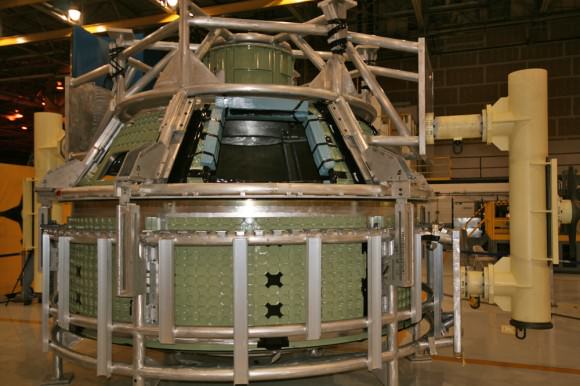
built at NASA Michoud Assembly Facility, New Orleans, LA. Credit: Ken Kremer
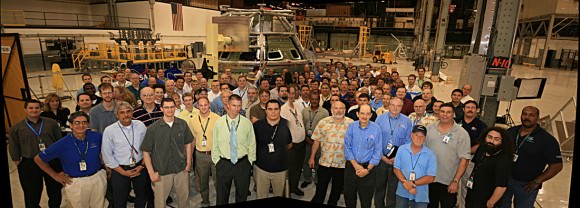
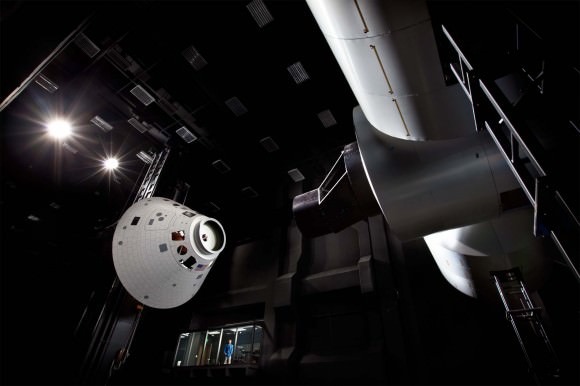
Keeping Astronauts Safe from Meteoroids
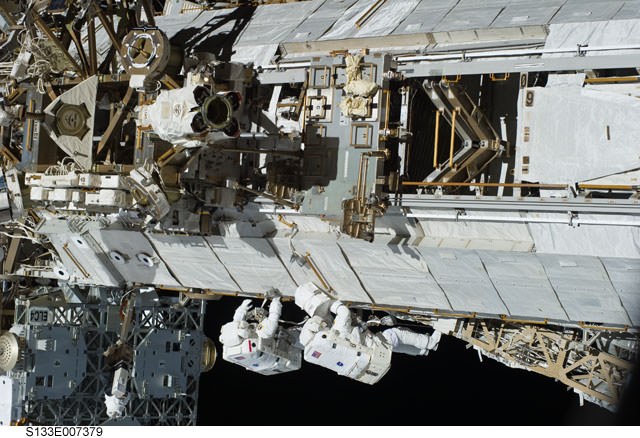
[/caption]
About 100 tons of meteoroids bombard the Earth’s atmosphere every day. For spacecraft in Earth orbit, a collision with these particles could cause serious damage or catastrophic failure, and a hit on an astronaut or cosmonaut conducting extra-vehicular activities in space would be life-threatening, if not fatal. But before anyone steps outside the space shuttle or the International Space Station, NASA checks with data from Canadian Meteor Orbit Radar to determine if it’s safe.
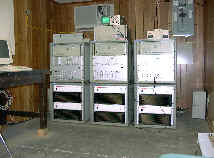
Using a series of ‘smart cameras’, a one-of-a-kind triple-frequency radar system and computer modeling, CMOR provides real-time data, tracking a representative sample of the meteoroids around and approaching Earth, which are traveling at hypervelocity speeds averaging 10 km/s (22,000 mph).
The system is based at based at The University of Western Ontario.
“When it’s in orbit, the largest danger posed to the space shuttle is impact from orbital debris and meteoroids,” said Peter Brown, Western physics and astronomy professor. By knowing when meteoroid activity is high, NASA can make operational changes such as shielding vulnerable areas of the shuttle or deferring space walks so astronauts remain protected.
Brown told Universe Today that the meteoroids tracked by the system are from 0.1mm and larger, and it detects the ionization trails left by these meteoroids and not the solid particles themselves.
CMOR records about 2,500 meteoroid orbits per day by using a multi-frequency HF/VHF radar. The radar produces data on the range, angle of arrival, and velocity/orbit in some instances. In operation since 1999, the system has measured 4 million individual orbits, as of 2009.
NASA makes daily decisions based on the data from this system. Radio waves are bounced off the ionization trails of meteors by the radar, allowing the system to provide the data necessary to understand meteoric activity on a given day. “From this information we can figure out how many meteoroids are hitting the atmosphere, as well as the direction they’re coming from and their velocity,” Brown said.
NASA says the greatest challenge is medium size particles (objects with a diameter between 1 cm to 10 cm), because of how difficult they are to track, and they are large enough to cause catastrophic damage to spacecraft and satellites. Small particles less than 1 cm pose less of a catastrophic threat, but they do cause surface abrasions and microscopic holes to spacecraft and satellites.

But the radar information from the Canadian system can also be combined with optical data to provide broader information about the space environment and produce models useful during the construction of satellites. Scientists are better able to shield or protect the satellites to minimize the effect of meteoroid impacts before sending them into space.
The ISS is the most heavily shielded spacecraft ever flown, and uses “multishock” shielding, which uses several layers of lightweight ceramic fabric to act as “bumpers,” which shocks a projectile to such high energy levels that it melts or vaporizes and absorbs debris before it can penetrate a spacecraft’s walls. This shielding protects critical components such as habitable compartments and high-pressure tanks from the nominal threat of particles approximately 1 cm in diameter. The ISS also has the capability of maneuvering to avoid larger tracked objects.
The original radar system was developed for measuring winds in the Earth’s upper atmosphere, and has since been modified by Brown and his fellow researchers to be optimized for the kinds of astronomical measurements currently being used by NASA.
When the radar detects meteors, the software analyzes the data, summarizes it and sends it to NASA electronically. Brown’s role is to keep the process running and continue to develop the techniques used to obtain the information over time.
Western has been working co-operatively with NASA for 15 years, and has been involved with its Meteor Environment Office (MEO) since it was created in 2004. The role of the MEO is predominantly to evaluate risk. “Everyone knows that rocks fly through space,” says MEO head Bill Cooke. “Our job is to help NASA programs, like the space station, figure out the risk to their equipment, educate them on the environment and give them models to evaluate the risks posed to spacecrafts and astronauts.”
Source: University of Western Ontario, NASA
How to Wake Up an Astronaut: Vote Now
From folk to boogey-woogey to cute kids singing, you’ve got 10 original choices for which song should be the winner of NASA’s Space Rock contest in the Original Songs category. While I’m personally bummed that my song didn’t get chosen as a finalist, the ten choices are creative, fun and really awesome. It’s great to know that there are other songwriters out there who are passionate about space exploration, too! NASA said 1,350 original songs were submitted, including 693 from 47 states in the US, 105 from Canada, and 552 from 61 other countries. The two songs with the most votes will be the first original songs chosen by the public to be played as wakeup music for a shuttle crew, and will be played during the STS-134 mission, sending a ‘rise and shine’ to space shuttle Commander Mark Kelly and his five crewmates during their mission to the International Space Station. Voting runs from Tuesday, March 29 through launch day, which currently is targeted for April 19.
Listen to the songs and vote at the Space Rock webpage.
And you can still participate in the “Face in Space” project, which allows you to send a picture to space via an electronic transfer. During Discovery’s mission, more than 194,000 images flew in space. So far, almost 117,000 images have been submitted to fly aboard shuttle Endeavour’s STS-134 flight. To send your face to space aboard Endeavour, or Atlantis on the STS-135 mission targeted for June, visit the Face in Space Website.
Is National Academies Review of Astronaut Numbers Needed?
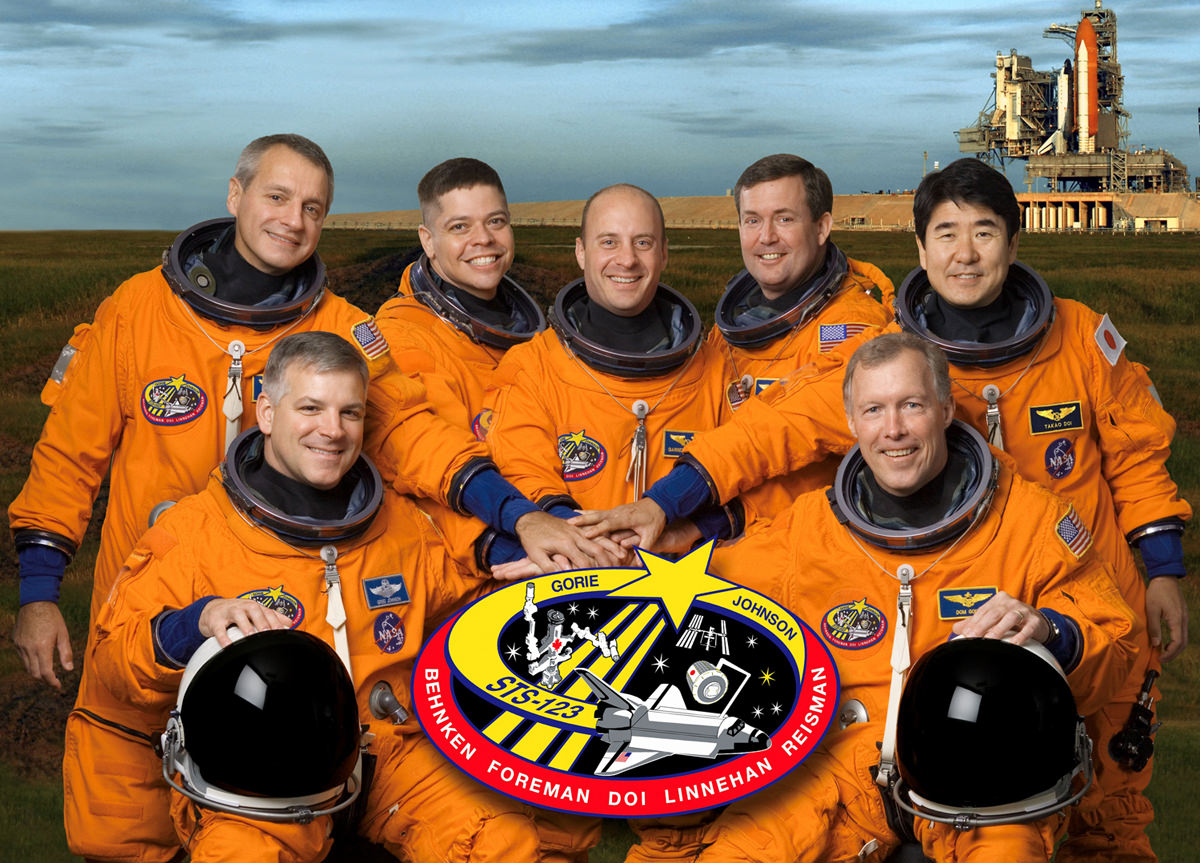
[/caption]
In the wake of the recent departure of astronaut Garrett Reisman from NASA to work for SpaceX, the necessity of the National Academies review, started this past December, to determine the of the number of astronauts that NASA needs should be called into question. Reisman is but one of many space fliers that have left NASA within the past year in what some might describe as a mass exodus from the nation’s astronaut corps.
The veteran astronauts that have left NASA recently include Dom Gorie, Marsha Ivens, Jose Hernandez and Alan Poindexter. NASA has lost an astronaut at the rate of approximately one every two months. Many have left after the crew of the final shuttle mission, STS-135, was announced. While plans for new rockets and spacecraft are on the drawing boards, it may be some time before NASA is launching anyone into space.
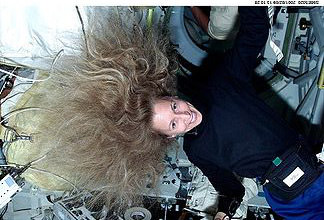
Astronauts, by their nature, tend to be type “A” personalities, those that thrive on a challenging work environment. It is for this reason that many are probably leaving the space agency, for career tracks that are both more satisfying intellectually as well as being more lucrative.
Currently, NASA has a number of different proposals of what should follow the shuttle program, which is set to end this June when the shuttle Atlantis touches down for its final “wheelstop.” After that, the U.S. will become dependent on Russia for transportation to the International Space Station (ISS). This places NASA in an uncomfortable, if all-too familiar position, as it has had to rely on Russian Soyuz spacecraft after the Columbia disaster in 2003. Russia has recently announced that seats aboard its Soyuz spacecraft will increase; it will now cost the United States $56 million each.
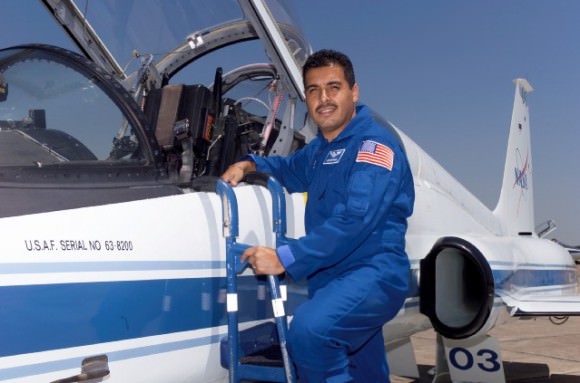
Reisman is a three-time shuttle veteran, he flew up to the ISS twice, on STS-123 and STS-132 and once down on STS-124. He will join SpaceX as a senior engineer toward astronaut safety and assurance. For their part, SpaceX is thrilled to be gaining highly-skilled workers like Reisman.
“We’re excited about the great team that we are building. Our talent is the key to our success. Garrett’s experience designing and using spaceflight hardware will be invaluable as we prepare the spacecraft that will carry the next generation of explorers,” said Elon Musk, SpaceX CEO and Chief Technology Officer.
In the final analysis this is speculattion. At some point, the amount of astronauts that leave the agency could level off leaving the agency with a consistent number. Also, when the agency again finds itself in the business of launching men and women into orbit and beyond it can begin looking for new astronaut candidates. The only problem with this is that if we need more astronauts – we will have to wait for them to complete the required training. While some might say this is guessing, so too is the precepts of the National Academies Review. Until NASA forges through this tumultuous time in its history the review’s findings will be inaccurate at best.
The fact is no one knows what the “future” NASA will look like. The mission objectives of the agency just a little over a year ago were wildly different than what they are today. Until the agency has a long-term mission statement, whatever conclusion the National Academies review comes up with – is academic.
